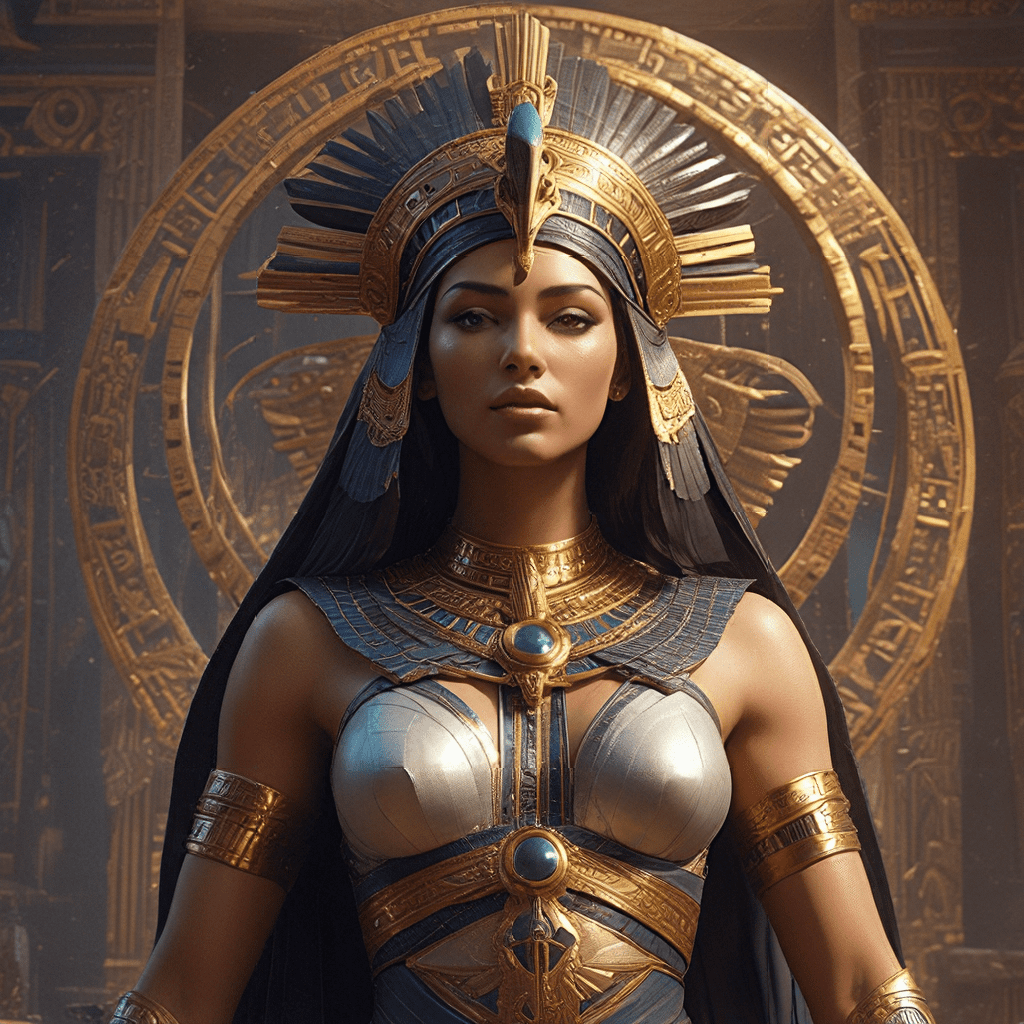Nephthys: The Goddess of the Afterlife
In the ancient Egyptian pantheon, Nephthys holds a unique position as a goddess associated with the afterlife, death, and rebirth. More than just a shadowy figure, she was a powerful force influencing the fate of the deceased. Her name, “Lady of the House,” reflects her role as a protector and guide in the realm of the dead.
1. Who is Nephthys?
Nephthys was a prominent goddess in ancient Egyptian mythology. She was the daughter of the earth god Geb and the sky goddess Nut, making her a sister to Osiris, Isis, and Seth. While her brother Osiris was associated with kingship and resurrection, Nephthys embodied the darker aspects of death, mourning, and protection of the deceased.
2. Family Ties: Sister, Wife, and Mother
Nephthys’s family ties were complex and interwoven with the fabric of Egyptian mythology. She was married to her brother Seth, the god of chaos and storms, a union that was often portrayed as a source of conflict and imbalance. Despite her marriage to Seth, she was deeply devoted to her brother Osiris, and she played a key role in his resurrection after he was murdered by Seth. According to some myths, Nephthys also had a son with Osiris, Anubis, the jackal-headed god of mummification and the afterlife.
3. Role in the Afterlife
Nephthys’s primary role was as a protector and guide in the afterlife. She was believed to assist the deceased in their journey to the underworld, helping them navigate the perilous challenges and ensure their safe passage to the Hall of Two Truths. There, the deceased would be judged by Osiris, and Nephthys would intercede on their behalf, advocating for their entrance into the afterlife.
4. Associations with Other Gods
As a goddess linked to the afterlife, Nephthys was closely associated with other deities who played a role in the realm of the dead. She was often depicted alongside her sister Isis, representing the duality of life and death. She also worked with Anubis, her son, in preparing the deceased for their journey to the underworld. Nephthys’s association with Osiris, the god of resurrection, highlighted her role in the rebirth and renewal of the soul after death.
5. Nephthys and the Dead
Nephthys’s connection to the dead extended beyond her role in the afterlife. She was believed to protect the deceased from evil spirits and malevolent forces, offering them solace and comfort in their final moments. The Egyptians worshipped Nephthys as a protector of the dead, imploring her to guide their souls to the afterlife and ensure their safe passage. Her presence was often invoked in funerary rituals and burial practices, symbolizing the hope for a peaceful transition into the next life.
6. Representation of Nephthys
Nephthys was typically depicted as a woman with a vulture’s head, often wearing a crown adorned with feathers. This iconic imagery reflected her connection to the sky goddess Nut and her role as a protector. Her vulture head symbolized her power and authority in the afterlife, while the feathers represented her ability to guide and shield the deceased. She was often shown holding a hieroglyph representing her name, “nbty,” which reinforces her role as “Lady of the House” and protector of the afterlife.
7. Nephthys in Art and Literature
Nephthys’s story and role in ancient Egyptian mythology are beautifully reflected in art and literature. She appears in numerous paintings, sculptures, and reliefs adorning temples and tombs. These depictions showcase her iconic imagery and her connection to the afterlife. She is also featured in several Egyptian texts, including the Book of the Dead, where she plays a vital role in assisting the deceased in their journey to the underworld.
8. The Mystery of Nephthys’s Role
Despite her prominence in ancient Egyptian religion, Nephthys’s role remains somewhat shrouded in mystery. While her association with death and protection of the deceased is clear, the details of her specific responsibilities in the afterlife are often left open to interpretation. This ambiguity adds a layer of intrigue to Nephthys’s character, making her a fascinating subject for exploration and analysis.
9. Evolution of Nephthys
Over time, Nephthys’s role and symbolism evolved. In later periods, she became more closely associated with the goddess Isis, merging into a single figure representing the combined forces of life and death. This shift reflects the changing religious beliefs and practices of ancient Egypt, where the duality of existence was increasingly emphasized.
10. Nephthys Today: Legacy and Modern Interpretations
Even today, Nephthys’s legacy continues to resonate. Her story and symbolism are explored in modern works of literature and art, reflecting a renewed interest in ancient Egyptian mythology. She is often seen as a powerful and compassionate figure, embodying the hope for a peaceful transition into the afterlife and the enduring power of feminine energy in the face of death. Nephthys remains an intriguing and compelling figure in the history of religion and mythology, inspiring admiration and reflection even millennia after her reign as a goddess of the afterlife.




